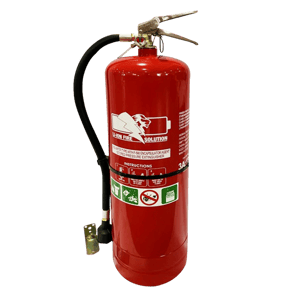When you’re working with hazardous chemicals, you need to be prepared for anything. Incidents involving the ignition of flammable chemicals, reactions with oxidising agents, the release of corrosive gases or toxic chemical spills can greatly impact your workplace as well as threaten the local community. In this post, we'll focus on how to create a safer workplace by detailing how you can create an emergency evacuation procedure to keep everyone safe.
WHS Responsibilities for your Emergency Plan
Under the model WHS laws, it is necessary for every Australian workplace, whether they have hazardous chemicals onsite or not, to have an emergency plan.
All workplaces must implement an emergency plan, so all personnel onsite know exactly what to do if they’re faced with an emergency situation. This plan must be written down and easily accessible, such as being kept in hard copy form within a HAZMAT box, as well as various high visibility spots around the workplace.
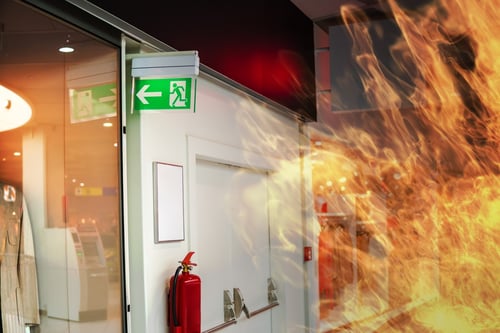
Your procedures and training should be simple to understand, so there is no confusion if an emergency situation, such as a fire, occurs.
Staff must also be trained to understand these procedures, with the emergency evacuation plan regularly reviewed and updated to ensure the effectiveness of the emergency response.
REMEMBER: There are additional requirements that workplaces that store or handle hazardous chemicals must meet when developing emergency plans. This is to ensure safety for the surrounding environment and community, as well as the workplace itself.
Types of Emergencies
There may be a full spectrum of emergencies that your workplace may face. Your emergency evacuation plan and emergency response must consider all possible situations and offer a safe solution during such an incident.
Some emergency incidents may include:
- Fire
- Bushfires
- Explosion
- Chemical spillage
- Chemical reactions
- Bomb threats
- Armed hold ups
- Natural disasters
REMEMBER: Consider all relevant laws that apply to your workplace, including public health laws, and state or territory disaster plans when creating your emergency evacuation plan.
Things to Include in your Emergency Evacuation Plan
To ensure the safety of your people, as well as comply with your local WHS laws, you’ll need to create an emergency plan that considers a variety of factors.
Your evacuation plan should include details on:
- Emergency procedures which will detail your emergency response to a variety of situations
- Evacuation procedures which include information on how to evacuate the site and the location of the assembly point
- How to notify emergency services (include contact details) as quickly as possible
- Actioning of emergency equipment and fire protection equipment (keeping in mind that different types of fires require different fire extinguishers)
- Medical treatment and assistance to affected personnel and visitors to your site
- How the emergency response coordinator will be communicating with others during the incident
You must also make sure that your emergency evacuation plan is tested regularly, and that all staff are trained to understand and action the plan. Emergency evacuation procedures and your emergency response must be reviewed, with specific staff members assigned to reviewing the emergency plan and updating staff on revisions.
Emergency equipment, such as fire extinguishers, must be suitable for the hazardous substances and dangerous goods that you have onsite.
A post incident follow-up may be required to ensure the relevant regulator has been contacted about the notifiable incident, and that any improvements to the emergency evacuation plan can be actioned.
Emergency Contacts
Your emergency contacts are a vital part of your emergency evacuation plan. You must also detail who should be contacted — and at what stage of the emergency.
You should keep updated details for your emergency contacts, including:
- Fire services
- Police
- Ambulance
- State Emergency Services (SES)
- Fire warden
- First aid officer
- WHS officer
- Security office
- Reception
- Local businesses that may be impacted by your emergency situation
- Poison information line
- Utilities such as power company
- COVID information
Staff, Supervisors & the Emergency Management Team
As part of your evacuation plan, you’ll need to nominate and train specific staff as part of your emergency management team. These people will be key players in determining the outcome of the emergency response. They will advise on matters regarding the evacuation plan and emergency procedures during the planning stage, as well as during the review stage and after an incident has occurred.
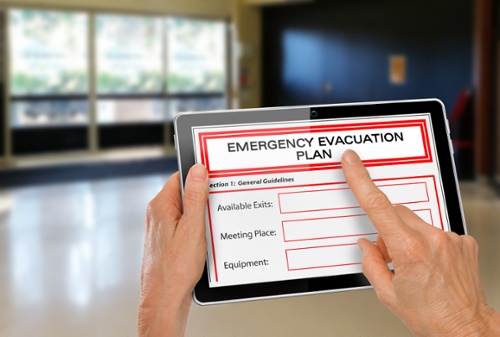
Staff should be involved with all aspects of the evacuation plan including planning for an emergency and reviewing the plan after an incident.
Your workers, supervisors and emergency management team will each have their roles and responsibilities clearly listed within the emergency plan. This will include their responsibilities during an emergency — as well as their roles in planning for an emergency.
Preparing your Emergency Evacuation Plan
Just as you have conducted an onsite risk assessment to determine the hazards that may be present with your chemicals, it’s also important to consider a range of factors when creating an emergency plan.
These considerations will include the nature of work, the hazards, the workplace size and location, as well as the number of workers and other people at your site.
You must also consider, under Section 359 of the Model WHS Regulation:
- Chemical quantities at your site
- Conditions under which they chemicals are used, handled, generated or stored in regard to:
- Fire load of hazardous chemicals
- Fire load from other sources
- Compatibility with other substances and mixtures onsite
Hazardous Chemical Considerations
When dealing with hazardous chemicals, such as flammable substances which can ignite, there is also the added danger of further hazards being sparked during an emergency. Your onsite risk assessment should already have identified the hazards associated with your onsite chemicals, so it’s important to consider all of these risks — and create procedures and staff training to reduce the likelihood of such an event.
Consider the following to include in your emergency plan:
- Access to the current Safety Data Sheets (less than 5 years old)
- Spill kits and equipment to assist with the emergency response
- Personal protective equipment when substances or gases are released
Also consider if your hazardous chemicals could impact neighbouring businesses or residential communities. How would they be communicated with if they’re threatened by an emergency at your site? Do you need to consult with them during the creation of your emergency plans? How will the handling of your emergency situation, such as the implementation of firefighting equipment, imact your local area?
Manifest Quantity
If your workplace carries a manifest quantity of hazardous chemicals, you must also ensure that you provide an emergency services manifest and site plan to the primary emergency service organisation.
You must also notify the regulator in your state or territory if your business uses, stores or handles hazardous chemicals above manifest quantities. This notification must be as soon as you know that chemicals above manifest quantities are being used, handled or stored — or at least 14 days before they’re used, handled or stored (whichever is earlier).
REMEMBER: We recommend storing your manifest and emergency plans in a dedicated HAZMAT box, so it's easily accessible for emergency services. You should consult with your local emergency services to determine the most suitable location for your manifest.
Emergency Response Training
While your emergency plan may include invaluable information, it’s useless if staff aren’t up-to-speed with the actions they need to take. Providing the correct information and training to staff is fundamental in ensuring the effectiveness of your emergency plan.
Staff should be trained to follow the plan, with practice evacuations, the identification and use of assembly points, the location of emergency equipment including fire extinguishers. There should also be detailed instructions on where to find first aid equipment and how to use it.
Emergency Evacuation
Your emergency evacuation should enable all personnel, including staff, contractors, customers and visitors to your site, to quickly and safely exit the premises into a safe area.
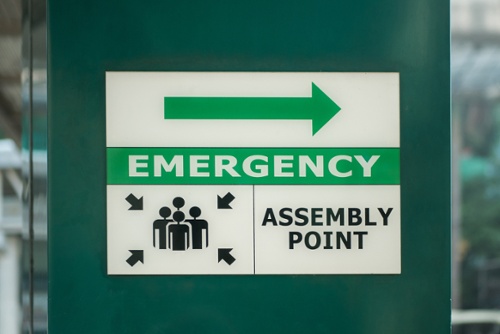
Safe assembly points, away from any potential chemical hazards, must be determined and identified in your plan.
The building evacuation plan must designate a specific site where it is safe for personnel to huddle in the event of an emergency. This spot will be clearly marked on all emergency evacuation plans.
Your designated assembly points should be understood by all personnel coming onto site, with clearly drawn maps located in key spots around the workplace.
Evacuation Plan
Building evacuation plans and evacuation procedures will be specific to your particular workplace.
Considerations for your emergency evacuation plan may include:
- All types of emergencies that could occur, along with the suitable evacuation plan for each type
- Any hazards which may arise during the emergency evacuation
- A fast and safe evacuation plan to protect human life
- Clearly identified routes to the assembly points
- Considerations for staff or persons who require special assistance when actioning the evacuation plan
- How to account for all people onsite
- What mechanism will alert personnel and visitors of an emergency evacuation?
- Do staff and visitors have access to evacuation procedures, including information about emergency exits and assembly points?
- Are all exit signs illuminated, in case an emergency occurs with thick smoke cover or at low light?
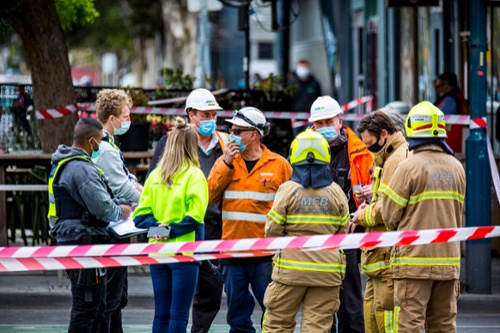
Emergencies evacuation plans are essential for all businesses, with a broad range of incidents such as floods, earthquakes, chemical spills, armed hold ups and more factored into your planning.
Key Points for the Evacuation Procedure
Are you searching for 'emergency evacuation procedures Australia?' Don't worry - there's ample information available to help you with your evacuation procedure development and training.
We suggest the following points are considered when creating an emergency evacuation plan and training your staff in how to exit the premises safely:
- Sound the alarm and have staff take essential items only – such as their jacket or bottle of water – to the designated location as per the evacuation map
- Assemble staff at the location in a calm manner
- Report the incident to the relevant local authorities and wait for assistance
- If there is a fire, have staff lie down or sit to avoid smoke inhalation while they are waiting for the situation to be controlled
- Avoid the building until authorities have said that it’s safe to re-enter
Creating an Effective Emergency Response
While working with hazardous chemicals comes with its own set of risks, adding an emergency situation – such as a flood, bushfire, hold up or uncontained chemical spill – only adds to the dangers of the emergency situation. By consulting with Safe Work Australia’s free online resources, as well as your local regulator in your state or territory, you can formulate emergency evacuation procedures that allow for the safe evacuation of your staff, as well as the surrounding area.
To learn more about managing risks associated with hazardous chemicals, why not download our free risk assessment template pack. Here, you’ll find important information that will help you better determine the possible hazards at your site.
Joining the team as a Dangerous Goods Storage Consultant, Melissa Hampton became Storemasta's Marketing Manager in late 2021. With extensive knowledge and experience in chemical compliance, Melissa is responsible for leading the Marketing team and helping shape their marketing strategy. In her spare time, you can find Melissa hiking, swimming and enjoying the great outdoors in beautiful north-west Tasmania.
